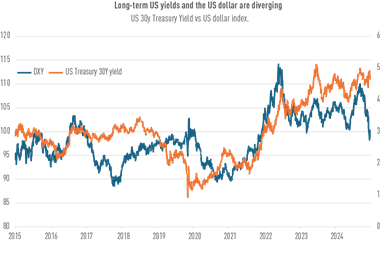Ageing is making its impact felt on Japanese pension funds. For non-funded, pay-as-you-go pension schemes, the effect of an ageing population is direct and well-understood. Benefits for the retired are paid with contributions made by working generations. So it is obvious that when the number of retirees rises in relation to the number of working people, either premiums must rise or benefits must fall in order for the system to be maintained.
For funded pension systems, such as the commonly seen Defined Benefit pension schemes, the impact of ageing participants on its finances is less straightforward, but profound all the same.
With ageing progressing, pension funds move from accumulation to distribution. Already many funds in Japan and elsewhere have shifted from net cash-positive—when contribution inflows exceed benefit outflows—to net cash-negative.
Liabilities which were once ultra-long have shortened considerably. A typical pension fund will see up to 80% of its benefit promises mature over the coming 20 years. This has profound implications for the operation of the scheme, in particular the level of risk it can take on board.
Why? Consider this: with four-fifths of those liabilities becoming due by 2030, the asset base generating returns is bound to shrink substantially over that time. If a fund’s portfolio loses money so it becomes underfunded, the returns necessary from the diminished asset base to make up for the gap becomes exponentially larger.
Oftentimes these returns cannot realistically close the gap, and the fund will face cash-out: no money left for the youngest of generations who are last in line to receive benefits.
Theo Kocken of the risk and solvency managers Cardano recently showed results of a simulation to a symposium in Tokyo on how such aged pension funds perform when investing moderately in risky assets such as equity.
The conclusions were astounding. Firstly, once a large negative return has shrunk a fund to 80% funding, even with superior and stable equity returns—a fixed risk premium of 3% over bonds—for pension funds with a highly aged profile it will be insufficient to avoid cash-out and default.
Secondly, even with a moderately aged participant base, a modest downturn in equity markets for funds with a shrinking asset base leads to a trap with no other final result but cash-out.
And for pension funds paying out more cash then they receive in contributions, investment returns in themselves are soon insufficient to avoid cash-out.
Governments, regulators and practitioners are considering two main types of measures. The first is to introduce flexibility for benefits. The Netherlands is spearheading this discussion. The Dutch might this year see some interesting new risk-sharing arrangements involving more flexible benefit structures within what will remain collectively organized DB-type pension schemes.
Japan’s Ministry of Welfare and Labour Affairs in December singled out 48 industry-based pension funds that needed short-term measures to improve their financial health. The funds have less than 90% of their government-pension related liabilities as assets on their balance sheet. Not withstanding the benefit promises these funds have on top of this first-pillar agency portion. If by the end of 2010, they had again undershot the 90% level, the regulator said it would demand recovery plans involving contribution increases and benefit cuts with quarterly monitoring. Here also a flexibilisation of benefits seems to be on the agenda despite the ministry’s previously strong opposition to benefit cuts in all but the most extreme circumstances.
For practitioners, the legal and regulatory environment is a given: they have to do what they can within the set of policy variables they can control, one of which is investment policy and risk management.
There, the main issue for an aging fund is to minimise downside risks so that it does not fall into the cash-out trap in the first place. That means managing for short-term downside risks as well as for long-term returns, and the trend is to do both things simultaneously with dedicated specialists in charge of each objective.
The new kid on the block of this changed paradigm is the risk-overlay manager who dynamically adjusts portfolio exposures using derivatives often with a predetermined floor, below which a pension funds solvency ratio should not fall.
With this dedication to shorter-term risks, at last the inherent dilemma between the short term and long term faced by pension plans might be bridged. At least for those plans whose solvency level and liability profile leaves some room to manoeuvre.
Oscar Volder, CFA, is head of institutional sales, Japan, for BNP Paribas Investment Partners in Tokyo




























No comments yet